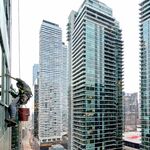And to flip that over, bus where warranted, and the massive cost of overkill with trains on those routes be applied to one of many routes with demand greater than present service provides. Funding is in short supply, best spend it where it does the most good.
I think this is key.
Most of us here at UT and in this thread in particular, believe there should be more service by VIA and a larger funding envelope.
We believe, as a group, in varying degrees, that done properly, this can reduce emissions from cars, provide greater mobility to those that can't choose driving, and provide a more comfortable and quicker trip time than cars along most routes.
However, we must balance that by acknowledging that there is unlikely to be a deluge of new funds, that service without the proper investment may be unreliable or not time competitive w/the car, and that will ultimately see another rounds of cuts and little if any benefit to show for a short-lived revival/enhancement of services.
Making sure bus service is in place, where practical, is not only a wise way to allocate dollars in the short term, but allows a thoughtful business case to be established for reactivating rail, where demand may warrant.
I'm not familiar w/every corridor across the country; but if we were to exclude currently mandated remote services and examine where there is likely a convincing market, that one could serve and build out from, I expect the most compelling cases for investment would likely be The Corridor, followed by Edmonton-Calgary; after that, I think there might be a solid case for a service linking some or all of the major centres in New Brunswick, and on to Halifax.
To come back to Northern Ontario, the compelling case will be Near North to Toronto; and then areas in the N/W feeding Thunder Bay.
But to get there you have to rebuild a seamless, integrated service network and the bulk of that must come by bus in the near term.
The case to be built around the higher (potential) traffic routes in Northern Ontario is one that will require sizable infrastructure investment to drive down trip times and avoid any conflicts w/freight.
I don't wonder whether it wasn't an unfortunate oversight w/the extension of 400 not to set aside a room for a rail ROW that could become exclusive passenger track getting you (ultimately) from Sudbury to Toronto (via Barrie).
Alas, that ship has sailed.




